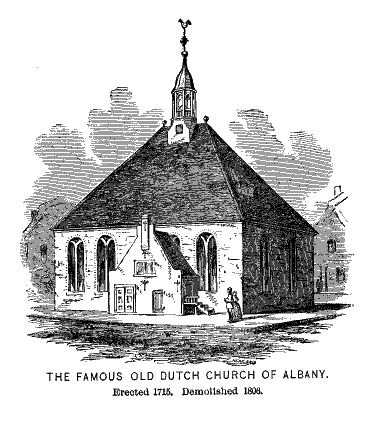A Tourist’s Guide through Albany
Among the delights and pleasures of the worldwide web, Google Books, and public domain is the ability to discover, dissect, and disseminate tomes from yesteryear that were otherwise moldering in the locked “local history” room of the public library, available only to those willing to submit to the suspicions of the collections librarian and able to copy it all out in longhand. Thank you, computer age, for making it easier to connect to the past.
One of those discoveries has been “The Tourist’s Guide Through the Empire State,” edited and published by a Mrs. S.S. Colt in Albany in 1871, and, in the manner of the time, bearing even more title: “Embracing all cities, towns and watering places, by Hudson River and New York Central Route, describing all routes of travel, and places of popular interest and resort along the Hudson River, Lake George, Lake Champlain, the Adirondacks, Saratoga, Niagara Falls, etc. etc.” No small feat, but Mrs. Colt is quite up to it. There is way too much about Albany (or, as she titles it, The Capital City) to post in one stroke; there will be more. Enjoy this for openers. (All emphasis is, I assure, original to Mrs. Colt.)
The oldest city in the United States, excepting St. Augustine, is Albany. As such, it claims the reverence, not only of every true-hearted Dutch-man, but of every member of the universal Yankee nation, which has no geographical limit this side of Saturn’s rings. Until within a few years, Albany was, in every sense of the word, an old-fashioned town. The Present is still linked with the Past more inseparably here than in any other city in the State. To write of Albany, and disregard that conservative element which once admitted outsiders to a position in “good society,” under this protest –
“Take, take the Yankees in,
And end this fuss,
Or be assured, my Lords,
They’ll take in us!“would be to present but a dry narrative of dates and directory of Public Buildings.
Oh, there’s more . . . .
A live description of Albany will not represent it as wholly “a live town,” according to the general American acceptation of that phrase in this present year of 1871.
And yet, with much conservatism, there is also stability and rectitude and the best representatives of the old Dutch aristocracy of long ago, are the most genial and high-toned – in all senses of the word, are among the best Men of To-Day.
A friendship formed in Albany, is a friendship for life.
A business is more slowly established here than in many places which boast of “more enterprise,” but it is for this very reason more surely established. A house reared here is less liable than elsewhere to be swept away by the tides of progress, unless indeed it is built upon North Pearl, where the rush of business is entirely changing the character of this old and stately street. The first glimpse of Albany reminds the European traveler of some of the cities of the old world. Its spires and domes indeed
“Gleam bright
In morning’s light.”The Delavan House and the Capitol seem to be the two head-centers of the city. The former is under the control of Mr. Charles Leland and is very well managed. The latter, it is sometimes hinted, is under the control of the highest bidder, and is not always well managed for the public good.
Leaving the Delavan House for a stroll over the city we will follow Broadway to State Street.
Broadway was first known as Handelaer, and subsequently as Market street. State street was originally Yonkers. At the intersection of Broadway and State street stood the old Dutch Church which was torn down in 1806.
The Delavan House was not only one of the city’s premiere hotels (in a day when hotels were as much civic meeting places as they were lodgings), it had been founded in 1845 as a temperance house by Edward Delavan, whose prohibitionist sentiments were not entirely out of tune with the times, as New York State briefly enacted prohibition in 1855, part of the Know Nothing movement’s anti-immigrant sentiments. (The law was struck down early in 1856, having had very little effect.) By the time Charles Leland managed the Delavan, politicians meeting there were well able to procure a drink. Or two.) Very well-known among travelers, the Delavan was Albany’s landmark hotel until it burned spectacularly on December 30, 1894 (click here for the New York Times account of the fire). The location would soon after be used for the construction of Albany’s new Union Station.
 The Old Dutch Church at the corner of Broadway and State streets had been the location of a church since 1656. It was succeeded on that northwest corner by a building called the Marble Column Building, and later the Albany Museum, according to Don Rittner’s “Images of America: Albany.” That building presented a rounded front to the street, as does its 1904 successor, the First Trust Company building, now used by the SUNY Research Foundation.
The Old Dutch Church at the corner of Broadway and State streets had been the location of a church since 1656. It was succeeded on that northwest corner by a building called the Marble Column Building, and later the Albany Museum, according to Don Rittner’s “Images of America: Albany.” That building presented a rounded front to the street, as does its 1904 successor, the First Trust Company building, now used by the SUNY Research Foundation.

![Reblog this post [with Zemanta]](http://img.zemanta.com/reblog_e.png?x-id=4a7be167-e976-41bb-9a8e-7532ffbd5ad3)